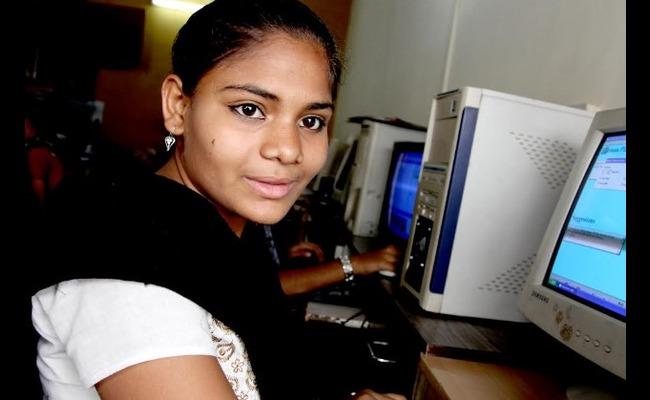Let Us Create a Feminist Digital Transformation for the Well-being of All

Digital literacy is one of the most critical skills for the future world of work. The ILO suggests that Internet and communications technology will play a significant role in almost all future livelihood opportunities, including those working in the unorganised sector. Digital skills can range from accepting digital payments to working on digital platforms that aggregate delivery agents, taxi drivers and service professionals. Recognising the role of ICT in achieving sustainable development goals, the United Nations has declared the theme for International Women’s Day this year to be ‘DigitALL: Innovation and technology for gender equality’. They state that ensuring digital literacy for women and other marginalised groups “has greater potential for innovations that meet women’s needs and promote gender equality”.
In India, the telecommunications sector has seen fast growth in numbers and financial value since the 1990s. Economic growth, investment in telecommunication infrastructure, and development of the mobile phone manufacturing market in India have been a few factors that have led to this growth. According to the International Telecommunication Union database, India has the world’s second-largest telecommunication network and second-highest Internet user base. The Minister for State for Electronics & Information Technology and Skill Development & Entrepreneurship, Rajeev Chandrasekhar, had said in December last year that India has more than 800 million broadband users.
The Government of India’s “Digital India” policy, which focuses on enhancing the public service delivery ecosystem through information technology and universalising access to digital communications infrastructure, has also seen a great impetus since its launch in 2015. One of the significant successes of the policy has been India’s record growth of the digital payments ecosystem from 2,071 crore transactions in FY 2017-18 to 8,840 crore transactions in FY 2021-22, a story which has seen the inclusion of street vendors and small merchants in the growing digital payments ecosystem.
However, the growth of digital infrastructure and smartphone connectivity across different socioeconomic groups has not been equal. Women, especially those from historically marginalised groups, have been left behind at the wrong end of the digital divide. As part of a transnational research project studying the asymmetries in accessing information during humanitarian crises, ActionAid Association India conducted a study with migrant workers from Patna and its adjoining districts. The survey results indicate that gender, age and other socioeconomic factors influence access to mobile phones, the Internet and other digital services.
The preliminary data from the field survey of 2,500 migrant workers indicates that 91.72% of males have access to a mobile phone compared to 73.13% of females, suggesting that males are more likely to own mobile phones, and access the Internet, social media and online financial applications. Moreover, only 64% of females who used mobile phones had a sim card in their name, compared to 83% of male mobile phone owners. Furthermore, the difference in Internet and social media usage by gender is even higher, with 61.94% of males using the Internet and 61.31% of males using social media compared to 35.99% and 34.36% of females, respectively.
Further discussions with women who used mobile phones also revealed that the narratives about usage and access to mobile phones by women are layered. First and foremost, a significant variation exists between the proportion of women using mobile phones and those using smartphones. Most of the women respondents said they could not use smartphones because of their lack of technical knowledge.
Younger respondents and those who had attained secondary levels of education were generally more adept than their peers at using smartphones. This trend was also similar for male respondents, albeit at higher proportions. While age and education determine the ability to handle different types of phones, many intra-household factors determine women’s access to phones. For example, most women respondents said they did not own the mobile phones they used. Instead, they shared mobile phones with members of their family.
Recognising that unequal access to information technology has exacerbated existing inequalities, ActionAid Association is also trying to reduce the gender digital divide. With the idea of empowering the most marginalised, the organisation works with collectives of young women from marginalised communities across 13 cities of India, facilitating capacity-building initiatives on computer skills and digital literacy. It has set up an e-learning centre in the Wayanad district of Kerala for children and youth from tribal communities. It conducts regular computer training classes for girl children of migrant workers of Solan district in Himachal Pradesh. In three districts of the Bundelkhand region of Uttar Pradesh, ActionAid Association has been working to link women, and farmers, to a digital marketplace where they can sell their products.
As we stand in solidarity with the continued struggle of women across the world and commemorate actions by women workers, we need to ensure that women are once again not deprived of entering the workforce due to the fourth industrial revolution – led by cyber-physical systems. India’s female labour force participation rates have been falling since before the pandemic. The Government of India needs to broaden the scope of the ‘Digital India’ programme and focus more on building the digital capabilities of women and people from marginalised communities. Inclusive technology and digital education for all are crucial for a just feminist future and the well-being of all.
By Koustav Majumdar, Policy and Research Unit, ActionAid Association





